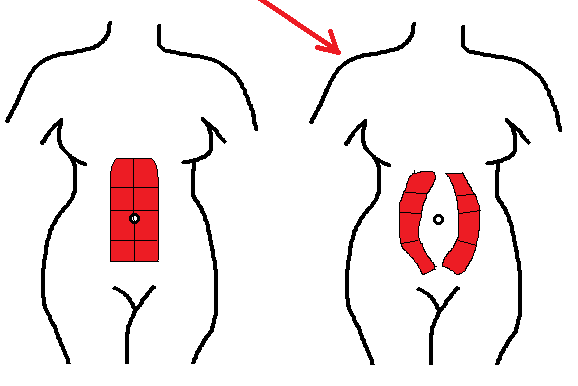Diastasis Recti after Pregnancy
Although diastasis recti is a common phenomenon among women after childbirth, the condition is not well known and many women unknowingly suffer from this ailment in their post pregnancy. If you find that you still look pregnant even after giving birth, there are high chances that you might have the diastasis condition. With continuous exercises, this anomaly can be rectified.
Here is the Table of Contents
What Is Diastasis Recti?
Diastasis recti is a condition that causes complete or partial separation of the rectus abdominis, also known as the six-pack. This creates separation at the midline of the stomach. This condition is prevalent after childbirth. However, most new mothers are not aware of this problem, and they continue living with it. Although in most cases, diastasis recti does not cause any physical complications, it might damage your self-esteem. Emotional damage is far more destructive than any physical damage as it lowers your confidence and attitude towards life.
Pregnancy based diastasis recti is caused by the stretching of your uterus and the stomach muscles to accommodate your growing baby. It is a common anomaly and all women around the world can get it after childbirth. However, this condition is not only limited to women after delivery but men can also get it. This could be caused by lifting the incorrect weights or trying out exercises that are unsafe for your abdomen walls.
Diastasis Recti Symptom
1. Experiencing Back Pain
Diastasis recti can cause back pain. This can be hard to notice since most women experience back pain after childbirth. This is because of the much strain you had put on your back while pregnant. Supporting all the baby weight during the nine months can put a toll on your back. For this reason, people usually miss the early stages of diastasis.
2. Poor Posture
When you have diastasis recti, you end up getting a bad posture. This could be caused by lower back pain, which makes it hard for you to stand and walk properly. Additionally, the weight of the stomach could be causing you to have a bad posture. If this continues, you might find that you have trouble walking and carrying out some basic activities. Also, you might find that sitting for long hours may prove difficult, especially if your work requires you to be seated at an office.
3. Constipation and Bloating
Since your stomach muscles are stretched out, it might be difficult for you to digest food. This ends up causing constipation and bloating. When gas is filled in your stomach, it might prove to be uncomfortable. When you are constipated the whole day, you tend to retain a lot of gas, which causes your stomach to bulge out even more. When you experience continuous bloating and constipation in your post pregnancy period, you need to consult your doctor immediately.
How Diastasis Is Treated
1. Use Postpartum Wraps
After giving birth, you should consider using the best postpartum belly wraps to hold the stomach muscles in place. This helps before the muscles gain enough strength to be held in position. The postpartum tummy wrap offers support to your stomach muscles, and this helps them get into shape.
Continuous use of the belly wrap will help your stomach muscles to regain their original shape and this helps reduce the effect of the diastasis recti condition. However, ensure that you don’t wrap yourself too tightly, as this may cause more harm than good.
2. Try Physiotherapy Exercises
You can try physiotherapy exercises to strengthen your stomach muscles. This will help your muscles to pull back to their original tightness. The exercises involve you lying on your back with your knees bent and trying to breathe. These exercises are simple, and you won’t even break a sweat.
Conclusion
Diastatis rectis is common in women after childbirth, and it is important to stay in contact with your doctor for you to get the best postpartum care. Some of the postnatal conditions are hard to spot, and they need a specialist to be found on time.

